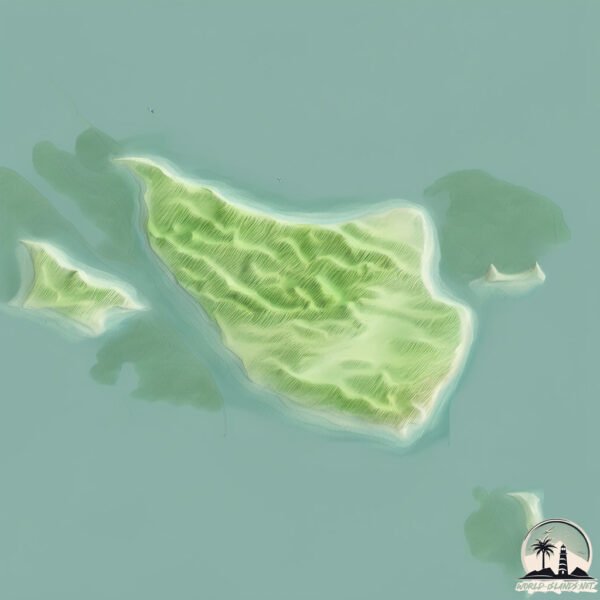Welcome to Isla Ariadna , a Dry island in the South Atlantic Ocean, part of the majestic Atlantic Ocean. This guide offers a comprehensive overview of what makes Isla Ariadna unique – from its geography and climate to its population, infrastructure, and beyond. Dive into the details:
Geography and size of Isla Ariadna
Size: 14.9 km²Coastline: 27.1 kmOcean: Atlantic OceanSea: South Atlantic OceanContinent: South America
Isla Ariadna is a Medium Island spanning 15 km² with a coastline of 27 km.
Archipel: –
Tectonic Plate: South America – A major plate covering the South American continent and part of the Atlantic Ocean, known for the Andes mountain range and significant seismic and volcanic activity.
The geographic heart of the island is pinpointed at these coordinates:
Climate and weather of Isla Ariadna
Climate Zone: DryClimate Details: Cold Semi-Arid (Steppe) ClimateTemperature: Cold
Climate Characteristics: Characterized by hot summers and cold winters, this climate is typically found on the edges of continental zones. It receives sufficient precipitation to avoid desert conditions.
Topography and nature of Isla Ariadna
Timezone: UTC-03:00Timezone places: America/Sao_PauloMax. Elevation: 4 m Mean Elevation: 2 mVegetation: WetlandTree Coverage: 95%
The mean elevation is 2 m. The highest elevation on the island reaches approximately 4 meters above sea level. The island is characterized by Plains: Flat, low-lying lands characterized by a maximum elevation of up to 200 meters. On islands, plains are typically coastal lowlands or central flat areas.
Dominating Vegetation: Wetland
Vegetation: 6 vegetation zones – Very Highly Diverse Island
Infrastructure and Travelling to Isla Ariadna
Does the island have a public airport? no .
Does the island have a major port? no .
The mean population of Isla Ariadna is 3 per km². Isla Ariadna is Gently Populated. The island belongs to Argentina .
Continuing your journey, Isla Wood is the next notable island, situated merely km away.
DURA TORMENTA NOS DESPIDIó EXPEDICIÓN ISLA ARIADNA Kayakismo de Exploración - DESDE FARO RINCÓN 4x4
KAYAKISMO Y 4x4 : Una expedición a la Isla Ariadna, podría decirse abandonada en proximidades de la costa sur de la ...
DURA TORMENTA NOS DESPIDIó EXPEDICIÓN ISLA ARIADNA Kayakismo de Exploración - DESDE FARO RINCÓN 4x4
KAYAKISMO Y 4x4 : Una expedición a la Isla Ariadna, podría decirse ...
KAYAKISMO Y 4x4 : Una expedición a la Isla Ariadna, podría decirse abandonada en proximidades de la costa sur de la ...
Panoramica de la Ariadna
Vuelta 360 desde el medano mas alto en cercanias de la casa en la isla ...
Vuelta 360 desde el medano mas alto en cercanias de la casa en la isla Ariadna.
Argentina is classified as Emerging region: G20: Group of Twenty – Major economies comprising both developed and emerging countries, representing the world’s largest economies. The level of income is Upper middle income.
News – Latest Updates and Headlines from Isla Ariadna
Stay informed with the most recent news and important headlines from Isla Ariadna. Here’s a roundup of the latest developments.
Loading...
Please note: The data used here has been primarily extracted from satellite readings. Deviations from exact values may occur, particularly regarding the height of elevations and population density. Land area and coastline measurements refer to average values at mean high tide.

